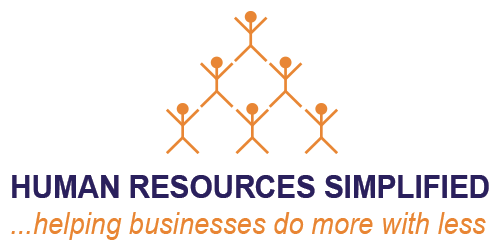 Q: In working with small businesses, it is great to see that the management team is serious about “hiring the best” people. And they usually understand that paying a competitive wage or salary will help them get the right person to accept the position. But what are you seeing after the hire, during that all-important “honeymoon period,” when the next step is the onboarding and training process?
Q: In working with small businesses, it is great to see that the management team is serious about “hiring the best” people. And they usually understand that paying a competitive wage or salary will help them get the right person to accept the position. But what are you seeing after the hire, during that all-important “honeymoon period,” when the next step is the onboarding and training process?
Unfortunately many new employees are left to figure things out for themselves. I think that many employers do not understand that HR is more than just hiring, termination, and processing paperwork for benefits and payroll. Like a human body, HR is a system composed of linked processes. If one or more “links” are not working properly or in sync with the others, the system breaks down. In a human body this typically results in disease. In business a breakdown in HR processes typically results in unhappy employees and a loss in productivity and profitability and an increase in turnover.
Q: So, you are saying that just like having a process in place to select the best person from the candidates presented from human resources, you can take a misstep with sustaining enthusiasm for the new job if you fail to orient the new hire to the company and the job? So what do you recommend?
Companies need to have an orientation plan in place for a new employee – both for the organization overall and for the department or area where the new employee has been assigned. Research shows that an employee’s experience during the first 1-4 weeks on the job is critical to improving retention and job satisfaction. Four percent of new employees leave after a disastrous first day and 25% leave in less than one year due to poor onboarding. Only 55% of HR professionals say they have an effective onboarding process and only 25% say they do a good job of measuring and monitoring their new employee onboarding.
If a new employee feels welcome and is given attention and the appropriate resources and information immediately after they are hired to help them quickly “learn the ropes,” there is a substantial payback to the company in increased productivity and ultimately increased quality and customer satisfaction.
Unfortunately for many small and medium size businesses, orientation is simply signing paperwork and handing out the Employee Handbook. Often business owners assume that their department heads are providing some sort of orientation, but usually this is not the case.
Some companies are using innovative onboarding approaches to ensure an effective introduction to the company. This includes an “onboarding passport,” assigning a “buddy” to work with the new hire during the first few weeks, or using a New Employee Survey after 30 days to determine the effectiveness of the onboarding process.
Q: How does tracking turnover tell a story of how successful a company is keeping its employees for longer than one-two years?
Oftentimes small businesses either do not track turnover or track it for the company overall. Turnover metrics give a more complete picture if they are broken down so a business owner knows: 1) when employees are most likely to leave; 2) if the company is losing its most talented employees; 3) what departments or work groups have the highest or most frequent turnover; 4) which employees are most likely to leave – e.g. females, older workers, high performers, etc.
Employees who leave a company in less than one year represent an investment of time and money that the company has lost as well as a decrease in productivity, quality and customer satisfaction. Generally speaking, the cost of employee turnover is not a line item in a company’s budget projections. However, if some turnover statistics are kept, and you know that e.g. three employees typically turn over annually, you can expect a cost of $2,000 to $10,000 for the hiring and training of each new replacement employee.
Q: But what about companies that do not have an inside HR department because they do not have enough employees?
It is important for these companies to bring in an external HR service provider – and sooner rather than later. Since HR is often viewed as “overhead” or as a simple function of hiring and processing paperwork for benefits and payroll, smaller businesses don’t understand the value that strategic HR processes can add to the bottom line.
A good place to start is with an HR Audit. This service can substantially benefit a small or medium size company by identifying what HR processes are working effectively, what processes need to be revamped to be more effective, and what areas of employment law compliance need to be addressed in order to reduce risk to the company.
Q: So, just like a company has a CPA, a banker, an insurance agent for start-up and ongoing, once they get to a certain number of employees, it becomes time consuming to do the human resources functions?
Companies of all sizes can benefit from good HR services. We work with clients with as few as 5 and as many as 300 employees. There is no “magic number” when it comes to providing strategic HR processes to hire and retain good workers or to help to eliminate poor performers or to ensure that a company is in compliance with employment laws. In a 2015 survey it was found that 1 in 4 employees would quit for a 10% raise in pay elsewhere; more than 50% expect to leave their current job in 2016; less than 1 in 3 feel appreciated on the job; and only 13% are fully engaged.
Business owners want high levels of profitability and to be recognized for high quality products and/or great customer service. Companies need good quality employees with a strong work ethic and a commitment to the company’s success in order to accomplish these objectives. Great HR processes play a key role in helping companies achieve their business objectives.
THIS IS NOT LEGAL NOR FINANCIAL ADVICE
Pat Mathews, principal of Workplace Experts, brings more than 30 years of experience in management and consulting for Fortune 100 companies, as well as the non-profit and public sectors, and other for-profit organizations in the areas of manufacturing, construction, transportation, services, high tech, finance, healthcare, entertainment, hospitality, food service, retail, agriculture, etc. Workplace Experts and Human Resources Simplified collaborate to bring sophisticated human resources services to clients nationwide. Contact her pat@workplacexperts.com

Jean (JJ in HR) is a certified senior-level human resources executive/consultant, adjunct professor, management trainer, professional speaker, resume writer, career coach, LinkedIn profile builder, and published author.










